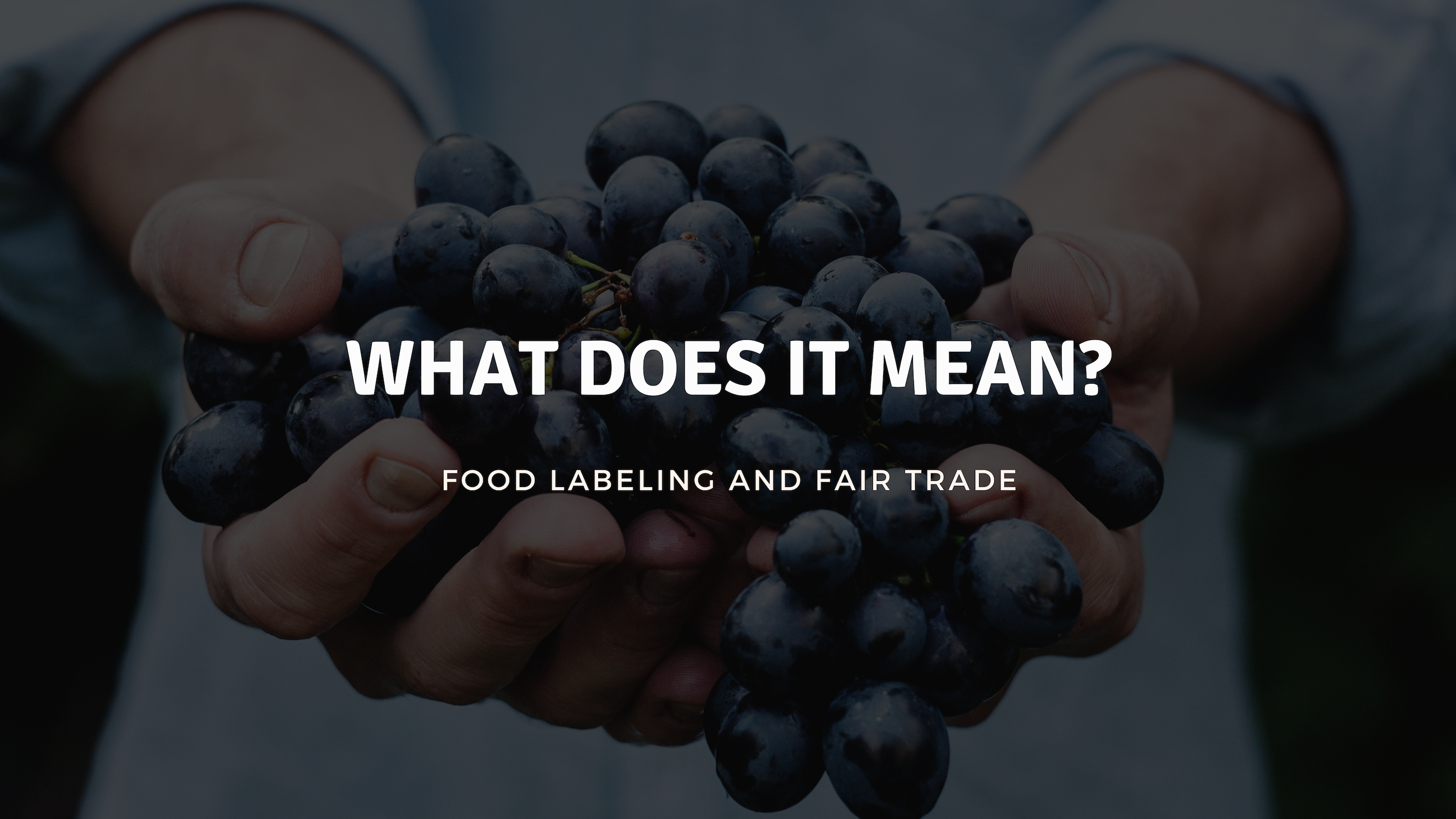What do you look for when buying your food? Do you look for the nutritional facts? Perhaps a certified organic label or a “Fair Trade” stamp? Food packaging today is covered with signs and information assuring customers that its contents are in fact better for personal health, for the environment, or for the people who produced it. Food activists discuss food labeling as ways in which producers attempt to create more “transparent” food systems, but as Daniel Reichman, and anthropologist at the U of R, puts it, they also “blur the line between food activism and corporate-driven reform.” (from “Information and Democracy in the Global Coffee Trade”). So what do your food labels mean? How can you be sure that the certified standards to which “alternative foods” are measured can adequately assure the health and safety of it’s production for all living parties involved?
First off, I think it’s fair to say that consumers should understand that supporting food certification programs like organic, Fair Trade, food justice-assured products can bring important change for growers and spark consumer interest in what it means for food to be “responsibly produced.” But they are not necessarily the golden ticket to building healthy food systems. Organic foods, particularly on scales of mass-production, do not have any certification for fair labor standards nor are they necessarily feasible solutions for consumers who are suffering the most from our unhealthy, industrial-based, chemically-ridden foodscape. Moreover, some small scale producers do more to assure fair and healthy food production but cannot afford the cost of certification. And so the organic movement shifts toward a “Whole Foods” system of privileged food for privileged lifestyles with little to no commitment to real and just change. But organic food may be a conversation for another blog post.
What about Fair Trade? The label ensures that a minimum cost of a product is paid to small-scale growers, who have access to pre harvest credit from large-scale buyers through democratically run cooperatives. An additional price is also allocated as a “social premium,” which is contributed to a social or environmental initiative local to the growing region. Fair Trade standards have also included changes to labor conditions such as workplace safety, sustainability measures, and rights to organizing on intensive farms. But they have also been proven to be irregularly regulated or monitored (if at all), thus reducing change to mere signage. Though the movement has activist roots, Fair Trade has become a global phenomena in the last few decades as a private-sector response to ensuring human and environmental rights. Recently, it has been under fire for failing to recognize the rights marginalized workers in their “democratically” run cooperatives, abusing unequal power dynamics between producers, certifiers, and buyers, and failing to maintain market-level prices that keep Fair Trade farmers competitive in international markets. It also coincides with a deregulation of international markets, shifting the responsibility of fairness away from political organizations and onto individual consumers. This is the crux of the argument against neoliberalism in our food system and its heavy reliance of signage and information as a tool for justice.
Food labeling seems to imply that the power of information is strong enough to turn consumers into activists with political ends, but it does not necessarily change the relationship between producer and consumer nor the political systems that keep industrial food production booming. To return to Reichman, he questions “is transparency an effective tool of food activism?”
Don’t be disheartened: I continue to buy Fair Trade and Organic foods when I can. Hillside does particularly well in offering healthy options by companies who are committed to better business practices. Food labeling is an important way for me to know more about my food, if and when I have time to seek it out. My argument here is not that Fair Trade is a hoax and that we shouldn’t support it: but it is also important to know that this system is one that still allows for exploitative loopholes and places the burden of responsibility for meaningful change on yours and my (perhaps privileged but still limited) shoulders. If you want to read more, look for Dan Reichman’s chapter, “Information and Democracy in the Global Coffee Trade” in Food Activism: Agency, Democracy and Economy.
Go green with Dining Team Green! Want more information on sustainability in dining? Follow us on Facebook, Instagram, and Twitter @ursustainibble. Contact us at urdiningteamgreen@gmail.com. We’d love to hear from you!
Guest Post Written by Sophia McRae, Class of 2019, Dining Team Green Sustainability Intern


Great Thanks for sharing this information. I am so happy to read these articles
I really appreciate reading such kinds of blogs. Thanks for sharing such informative articles.
Thanks for sharing such a great post about food labeling and fair trade. I have read all the article carefully because it is a serious issue now a days.
Impressed by the experience! Lot of information about Food. I want to more tips suce as topics. Becouse that is very need now a days.
Hey,
Glad to see this post and i have read it carefully this post made me more aware about food . I don’t thought about it before . Keep it up sharing such educative post .
Thanks for your information nice Food labeling. As workplace safety, sustainability measures, and rights to organizing on intensive farms.